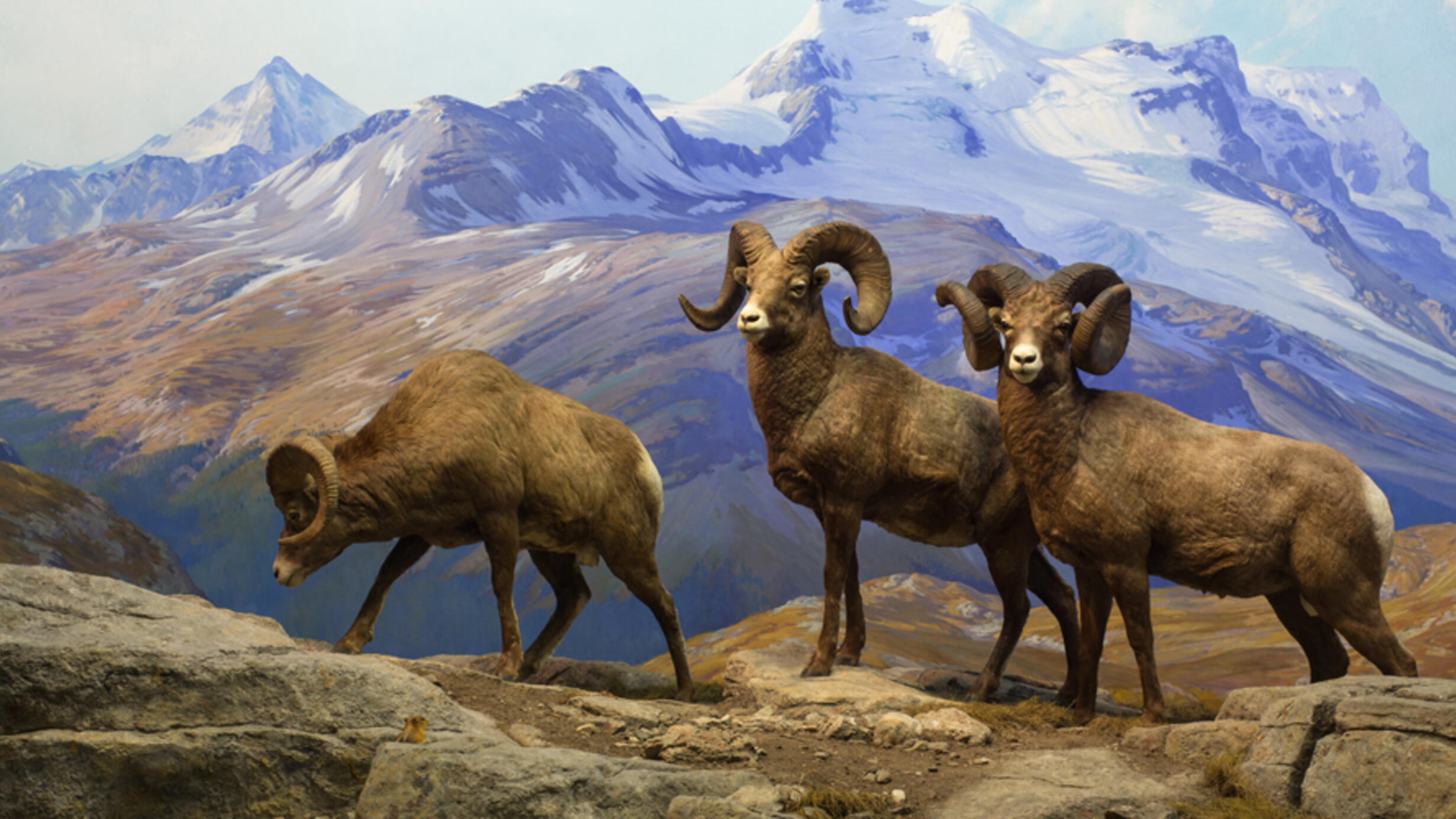Bighorn Sheep
Part of Hall of North American Mammals.

September Morning, Alberta, Canada
Stalwart symbols of mountain wilderness, a “bachelor band” of bighorn sheep stands before Mount Athabasca in the Canadian Rockies. Male sheep older than two years leave their mothers to follow a leading ram. Horn and body size determine rank, so the leader of this band is certainly the ram on the right.
Equally sized males may duel to secure their rank. Rivals will repeatedly face off, charge and then crash horns until one loses balance and concedes. During the mating season, when rams fight for ewes, battles are even more violent. The collisions will echo across the ravines of the Rockies, and some contenders will even be pushed off the edge.
Big Horns
How They Grow
Male bighorn sheep, like these three rams, have the most elaborate horns of any North American species. But they’re not just ornaments. The horns of North American bovids— sheep, goats, musk oxen and bison—are integral for mating and defense. All bovid males grow horns and the females of some bovid species do, too. Underneath the simple design is a complex architecture.